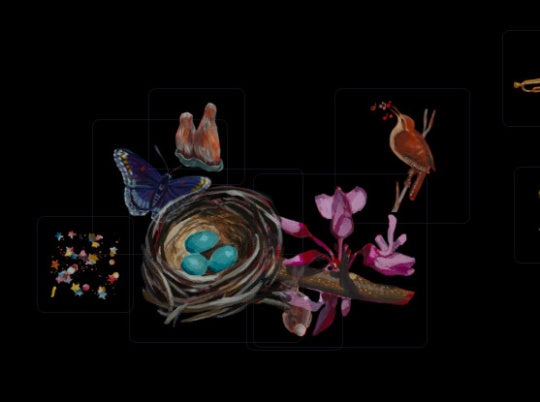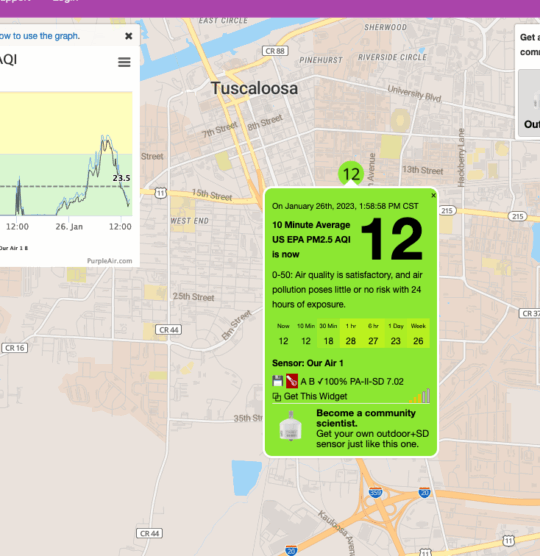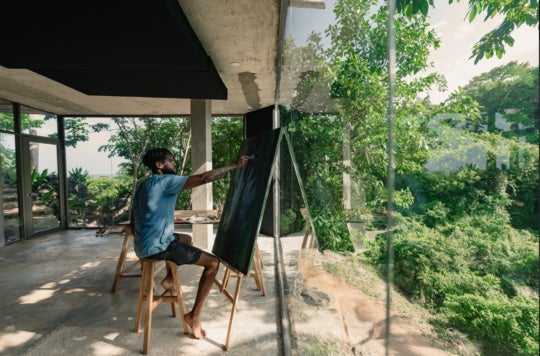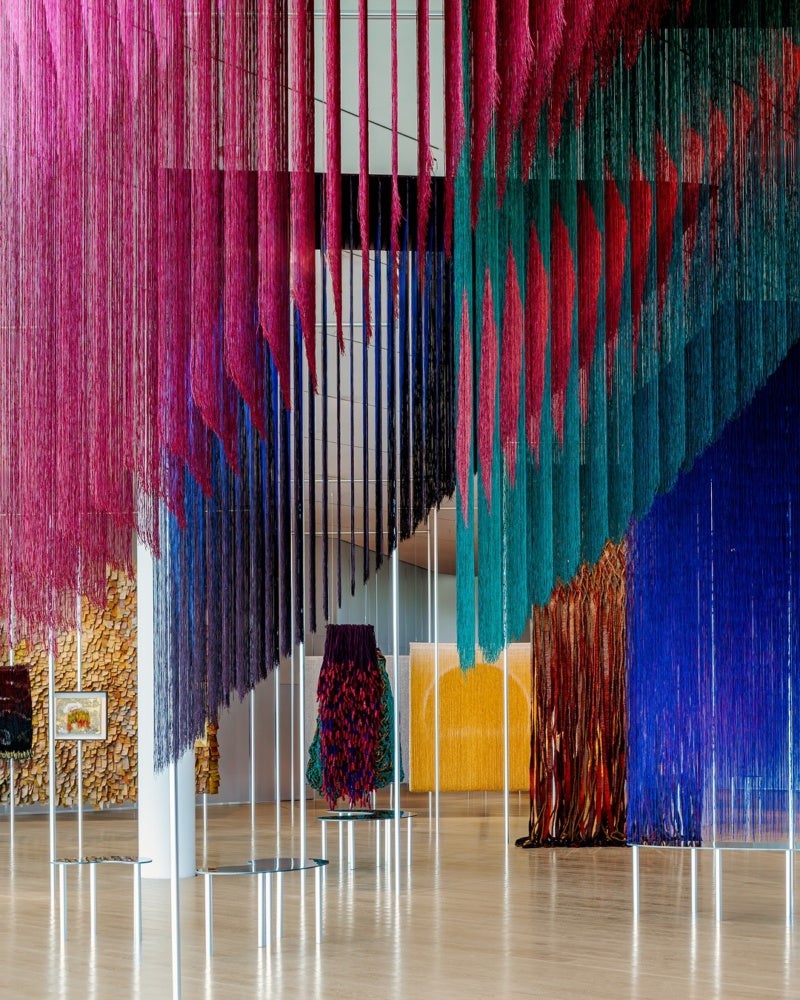
“What do I do?” fiber artist Olga de Amaral cheekily repeats the interviewer’s question in a Cranbrook Art Museum film profiling her decades-long art career. “I play around. I started playing around seriously fifty years ago.”[1] If Amaral’s practice is play, then textiles, color, and light are her playmates. Her retrospective exhibition at ICA Miami, presented in collaboration with Fondation Cartier and curated by Marie Perennès and Stephanie Seidel, features fifty works created over six decades.
Sun and air sift through Amaral’s Brumas (Mists) (2013-2018), a geometric cascade of undulating fuchsia, azur, and forest green thread hanging from the ceiling. “I live color,” Amaral told Cranbrook. “It’s like a language to me. It’s part of my essence.”
One walks past these porous Brumas towards floating walls of plastic, gold, and wool. Estelas (1996-2018), a suspended halo of gold, reveals Amaral’s obsession with the intricacies of light. Amoeba-shaped mirrored seats refract the Estela surfaces. The piece’s luminous, protective circle implies that at its center there is something to celebrate and something to mourn. At first glance, the piece reminds one of pre-Columbian funerary sculptures. However, writer Edward Lucie-Smith is quick to point out that there are “no equivalents for what [Amaral] makes in Pre-Columbian archaeology. Nevertheless, one feels that such objects ought in logic to exist—that she has supplied a lack.”[2]
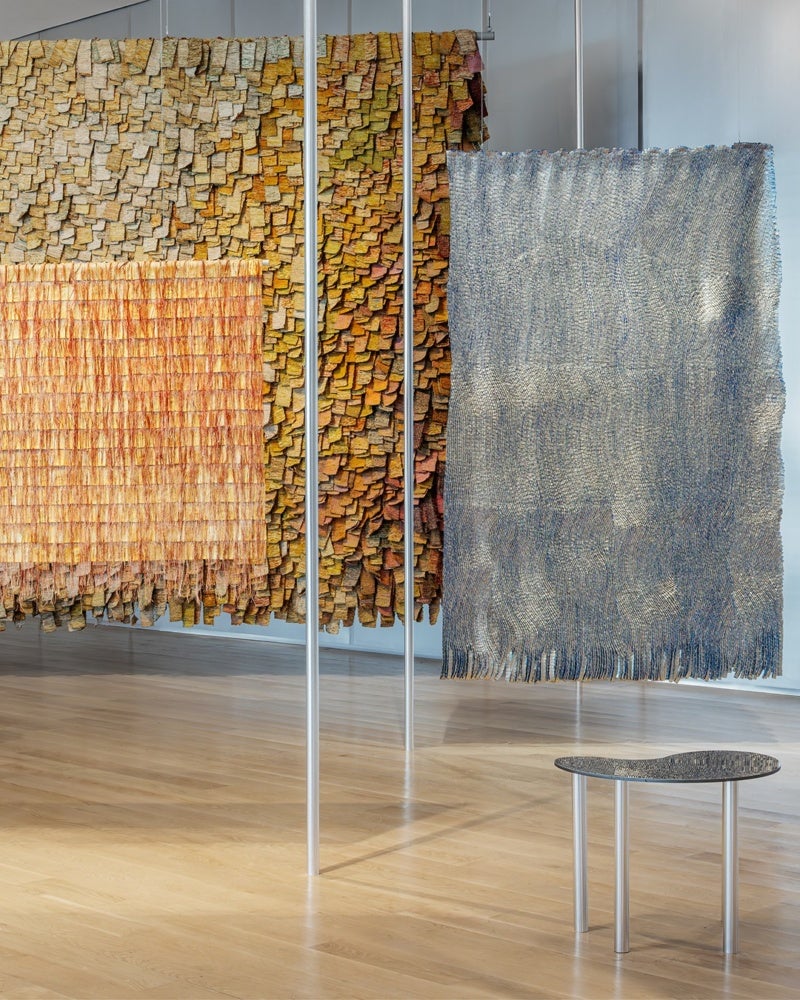
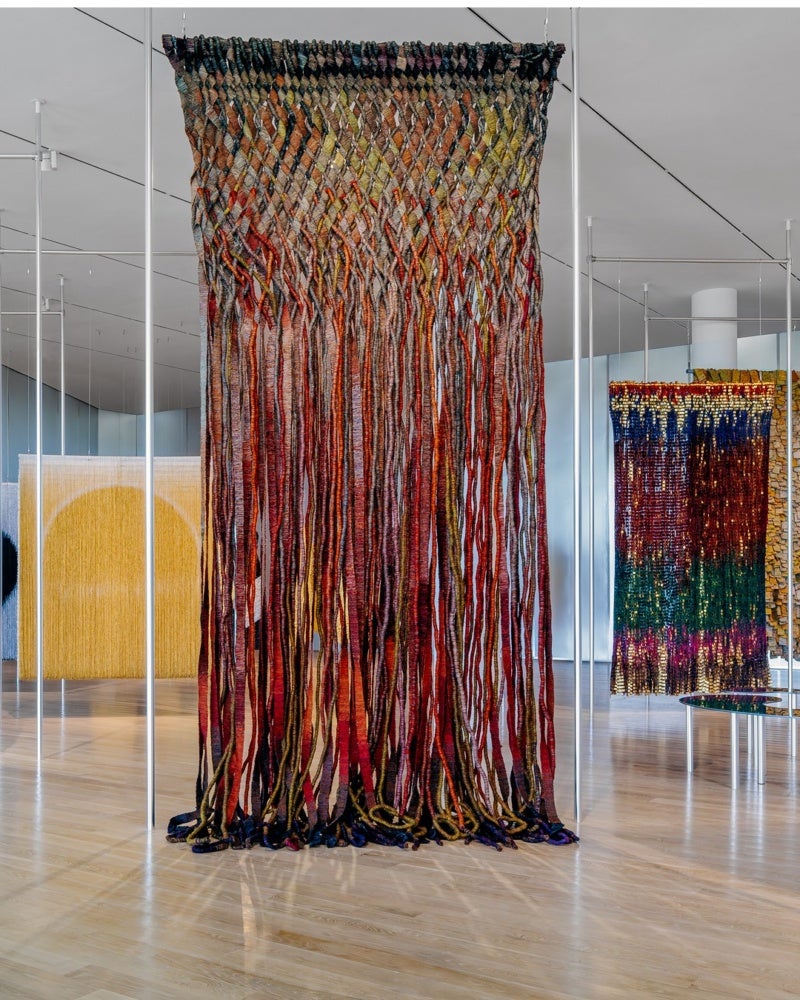
In deference to modern detritus, Amaral’s Luz blanca (1969/2010) elevates plastic from the ordinary to the sacred. A wall-sized torrent of synthetic sparkle, in Amaral’s hands, plastic loses the contemporary language of polluter and instead becomes soft, shimmering, almost shy. As Laura Mott points out, in the years since Amaral’s Luz series was created, “the cultural reading of [plastic] has shifted from the miraculous to utilitarian to dystopic…Today, the surface of these large-scale works feels like the trap of Narcissus, an invention by a humanity so impressed with itself it did not realize it was looking at its own self-destruction.”[3]
The land’s influence is everywhere, evoking the dynamic terrain of Colombia. Amaral is comfortable with the unpredictability of earth and loom, inviting nature’s surprising shapes into her textile-making. The woolen tentacles of Lianas (1983) stretch across the floor like root systems of a tree. The liquid texture of tapestries like Strata aqua 1 (2013) have a cooling effect, as if wading into a stream. “Landscape is nothing more than an extension of weaving,” Amaral once said. “It is only a mantel covering the earth.”[4]
With the eye of an engineer, Amaral contrasts geometric form with the meandering patterns of natural materials like cotton and horsehair. Architect Lina Ghotmeh designed the space to create the sense of a “vertical forest,” extending the ICA’s third story treetop view across the exhibition floor. Amaral earned a degree in architectural design from the Universidad Colegio Mayor de Cundinamarca in Colombia in the 1950s, studied fiber art at the Cranbrook Academy of Art in Michigan in 1954-55, and founded the University of Los Andes Textile Department in Bogotá in 1965. Held in Amaral’s balance of the mathematical and the marvelous, the viewer simultaneously touches earth and soars through the cosmos. Olga de Amaral is an archive of the endless relationships possible between nature, space, and matter. Monumental pieces like Nudo 24 (2015), a floor-to-ceiling knot shellacked in hot pink paint, serve as devotionals to Amaral’s materials. The materials are her idols. Her Gods. Amaral’s textiles document her time spent with the object, of her journey through the process, of time passing. There’s something undeniable human about rows of uneven stitching, abrasions in the fabric, stubborn fiber forcing its way through paint. The absence of the body yet the celebration of it, an attention to its touch.
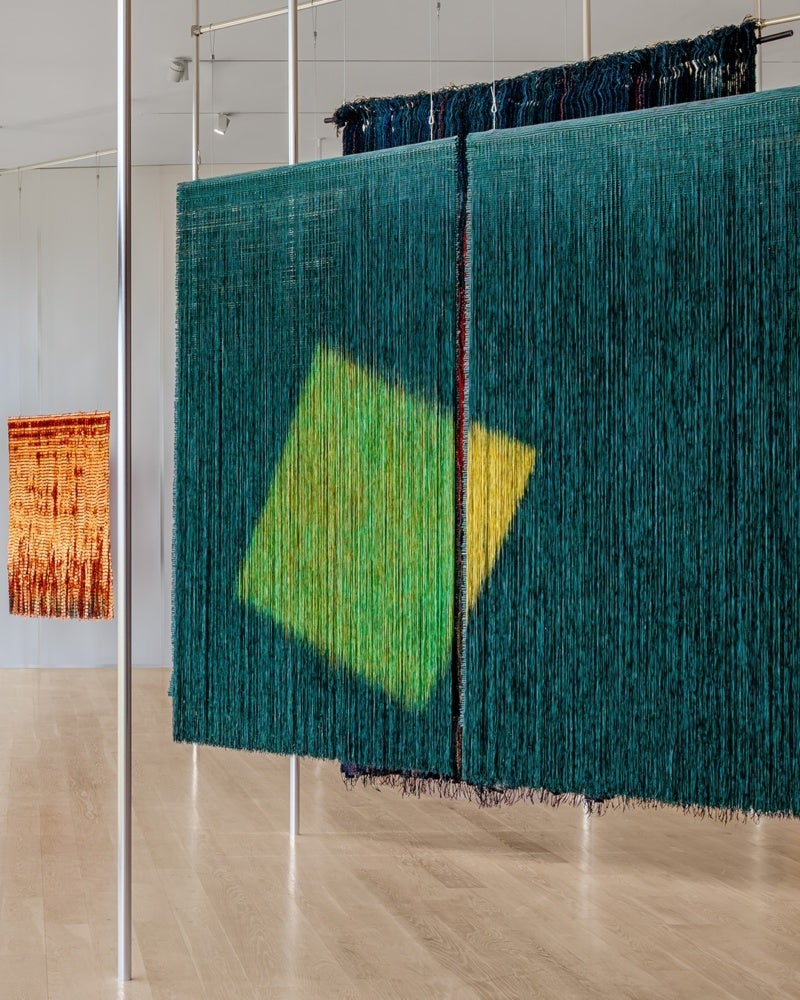
[1] Cranbrook deSalle, “Laura Mott and Anna Walker – Olga de Amaral: To Weave a Rock,” YouTube Video, Oct 30, 2021, https://www.youtube.com/watch?v=1bUanPPIzcc
[2] Edward, Lucie-Smith, “Les Metiers D’Art,” Olga de Amaral: Boundaries (Los Angeles, CA: Latin American Masters, 2012).
[3] Laura Mott, “An Alchemist’s Experiments: Olga de Amaral in Contemporary Art,” Olga de Amaral: To Weave a Rock (Houston, TX: arnoldsche and The Museum of Fine Art, Houston, 2020), 27.
[4] Cranbrook deSalle, “Laura Mott and Anna Walker – Olga de Amaral: To Weave a Rock,” YouTube Video, Oct 30, 2021, https://www.youtube.com/watch?v=1bUanPPIzcc.
Olga de Amaral is on view at Institute of Contemporary Art, Miami through October 12, 2025.

